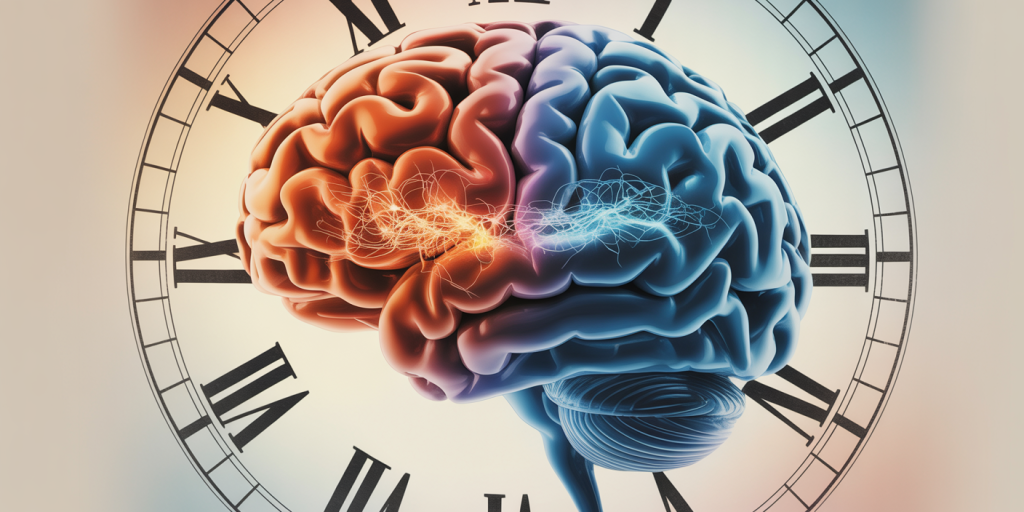The Psychology Behind Procrastination and How to Hack It
Anúncios
Procrastination is a universal challenge affecting individuals across all walks of life. Despite knowing the negative consequences of delaying tasks, millions routinely succumb to the temptation of putting things off, resulting in stress, missed opportunities, and reduced productivity. Understanding the intricate psychology behind procrastination provides a pathway to overcome it effectively. This article explores the causes, impacts, and scientifically backed strategies designed to hack procrastination, helping readers reclaim control over their time and goals.
Understanding Procrastination: More Than Just Laziness
Anúncios
Procrastination is often misunderstood as mere laziness or poor time management; however, it is a complex psychological behavior influenced by emotional, cognitive, and environmental factors. Studies reveal that procrastination is linked closely to the brain’s reward system and emotional regulation mechanisms rather than motivation alone (Steel, 2007). When individuals face tasks perceived as unpleasant, difficult, or anxiety-inducing, avoidance becomes a self-protective strategy to manage negative emotions.
Research from the American Psychological Association (APA) indicates that approximately 20% of adults and 50% of students engage in chronic procrastination, which is associated not only with decreased performance but also lower well-being and increased stress levels. The psychological discomfort caused by anticipated failure, fear of imperfection, or overwhelming task demands triggers procrastination, reinforcing a cycle of delay and guilt.
For example, a case study involving a group of university students showed that those prone to higher procrastination scores reported feeling significant anxiety about assignments but still deferred work as a coping mechanism. This emotional avoidance, paradoxically, heightened stress closer to deadlines, affecting quality and mental health. As such, understanding procrastination requires recognizing its emotional underpinnings and cognitive biases.
Cognitive Mechanisms Fueling Procrastination
At the core of procrastination lies a conflict between two brain systems: the limbic system, which seeks instant gratification, and the prefrontal cortex, responsible for long-term planning and impulse control. When a task feels unappealing or too complex, the limbic system often overrides rational decision-making, favoring immediate pleasures instead (Ainslie, 2001).

Temporal discounting is a key cognitive process here, where people disproportionately prefer smaller immediate rewards over larger delayed ones. A classic experiment demonstrated that participants consistently chose an immediate, smaller reward instead of waiting for a larger prize, indicating their tendency to discount future benefits. This tendency explains why someone might scroll through social media for five minutes rather than start an important report.
Moreover, decision fatigue contributes to procrastination. As people expend mental energy throughout the day, making choices becomes more challenging, particularly for complex or ambiguous tasks. Without clear priorities, individuals procrastinate as a default response, preserving cognitive resources but sacrificing productivity.
The table below compares cognitive factors influencing high versus low procrastinators:
| Cognitive Factor | High Procrastinators | Low Procrastinators |
|---|---|---|
| Impulse Control | Lower prefrontal cortex activation | Stronger executive function activation |
| Temporal Discounting | Strong preference for immediate rewards | Ability to delay gratification |
| Decision Fatigue Impact | High susceptibility | Effective decision-making strategies |
| Task Perception | Perceives tasks as highly aversive or complex | Views tasks as manageable challenges |
Understanding these cognitive aspects underscores the necessity of hacking procrastination not by pushing harder but by addressing brain-based mechanisms.
Emotional Triggers and Their Role in Procrastination
Emotions play a pivotal role in procrastination. Negative feelings such as anxiety, fear of failure, low self-efficacy, and perfectionism amplify the urge to delay tasks. Research from the University of Vermont shows that emotional regulation difficulties correlate strongly with procrastination tendencies, indicating that procrastination can serve as an avoidance strategy to manage unpleasant affective states (Sirois & Pychyl, 2013).

For instance, an employee put off preparing a quarterly business review report. While the delay might look like poor discipline, further investigation revealed that anxiety over negative feedback and feelings of inadequacy fueled the avoidance. The procrastinator’s focus shifted from task completion to managing fear and embarrassment, which ironically worsened performance.
Perfectionism also exacerbates procrastination. While perfectionists aspire to excellence, their excessively high standards and fear of making mistakes cause them to stall on starting or completing tasks. A study of professional creatives found that those with debilitating perfectionistic traits procrastinated more, particularly on high-stakes assignments, due to concerns over not meeting unrealistic standards (Flett et al., 2016).
Overcoming procrastination effectively requires strategies to regulate these emotional triggers. Techniques like mindfulness, self-compassion, and cognitive restructuring help reduce task-related anxiety by shifting focus from fear of failure to achievable progress.
Practical Hacks to Overcome Procrastination
Having established procrastination’s psychological roots, this section highlights actionable techniques to hack procrastination by targeting its underlying causes.
1. Break Tasks Into Smaller Steps One of the most effective techniques is task segmentation. Large, ambiguous projects trigger procrastination due to perceived complexity. By dividing work into smaller, manageable chunks, the brain experiences less overwhelm and can generate early wins, boosting motivation. For example, a graduate student facing a thesis can start by outlining chapters instead of attempting entire research sections at once.
2. Utilize Implementation Intentions This behavioral strategy involves creating detailed “if-then” plans to anticipate obstacles. For example, “If I feel distracted, then I will take a five-minute break and return to work.” Studies demonstrate that forming implementation intentions significantly reduces procrastination by automating goal-directed actions and minimizing decision fatigue (Gollwitzer & Sheeran, 2006).
3. Time Blocking and the Pomodoro Technique Allocating specific time slots to tasks reduces ambiguity and creates psychological boundaries. The Pomodoro Technique, involving 25-minute focused work intervals followed by short breaks, utilizes urgency and reward cycles effectively. Real-world testing in corporations shows a 15% improvement in employee productivity using these methods.
4. Modify the Environment Environmental cues significantly influence procrastination. Research by neuroscientist Daniel Levitin suggests decluttering workspaces and eliminating distractions (e.g., notifications, noisy environments) lowers cognitive load and enhances focus.
The comparative table below summarizes key procrastination hacks, their targeted psychological factors, and evidence-based effectiveness:
| Hack | Targeted Factor | Practical Example | Effectiveness (Based on Studies) |
|---|---|---|---|
| Task Segmentation | Cognitive overload, overwhelm | Breaking thesis into chapter outlines | High (Reduces anxiety and task aversion) |
| Implementation Intentions | Decision fatigue, impulsivity | “If-then” plans for distractions | High (Improves goal adherence) |
| Pomodoro Technique | Temporal discounting | Working 25 minutes, then taking breaks | Moderate to high (Enhances focus) |
| Environmental Modification | Attention, distraction control | Turning off phone notifications | Moderate (Reduces interruptions) |
By personalizing these techniques to individual triggers, people can hack their procrastination patterns and build consistent productivity habits.

The Role of Motivation and Self-Discipline in Managing Delay
Intrinsic and extrinsic motivation play critical roles in influencing procrastination behaviors. Intrinsic motivation, driven by personal interest or satisfaction, tends to reduce procrastination, whereas extrinsic motivation, involving external rewards or punishments, has mixed effects.
A longitudinal study tracking college students found that those motivated intrinsically to learn procrastinated 30% less than those motivated by grades or approval. This suggests cultivating a sense of purpose and personal value in tasks is vital for sustained engagement.
Self-discipline also serves as a moderator between motivation and procrastination. Individuals with higher self-regulatory capacity are better equipped to resist temptations and maintain focus despite low motivation. However, self-control is a finite resource that can be depleted, highlighting the importance of balance and recovery.
Practical example: A sales representative motivated by an internal drive to help clients succeeded in completing follow-up calls regularly, despite external pressure. In contrast, a coworker motivated solely by commissions put off calls until deadlines, reducing effectiveness. Training in self-discipline techniques such as goal-setting and mindfulness has generated measurable improvements in workplace punctuality and task completion rates.
Future Perspectives: Emerging Research and Technology in Tackling Procrastination
As understanding of procrastination deepens, new interventions leveraging technology and neuroscience offer promising futures for hacking this pervasive issue. Emerging research focuses on personalized behavior change algorithms through mobile applications that track procrastination triggers in real-time and deliver tailored cognitive-behavioral prompts.
Neurofeedback and brain stimulation techniques aimed at enhancing prefrontal cortex function show potential in improving impulse control, although these remain experimental and require ethical oversight.
Furthermore, workplace designs integrating flexible scheduling, autonomy support, and gamification elements are evolving to reduce procrastination while boosting motivation and well-being. For example, companies using AI-driven task management systems report improved employee engagement by optimizing workflows based on individual cognitive patterns.
At the societal level, educational reforms incorporating emotional literacy and executive function training in early curricula could mitigate chronic procrastination in future generations.
In summary, while procrastination is deeply rooted in cognitive and emotional processes, the integration of psychological science, technology, and behavioral strategies presents a powerful toolkit to hack procrastination effectively. Continued research and innovation will enhance our ability to transform procrastination from a debilitating habit into a manageable behavior aligned with personal and professional success.
